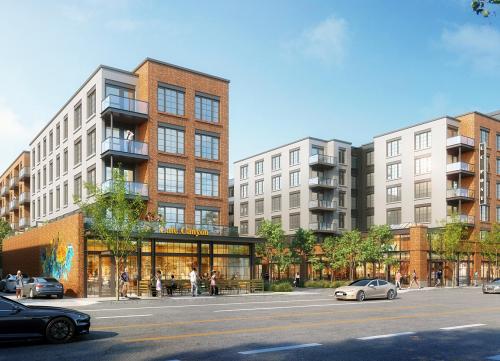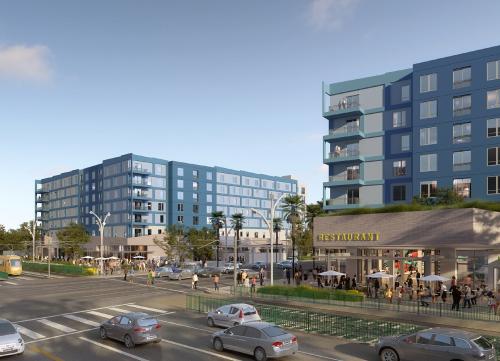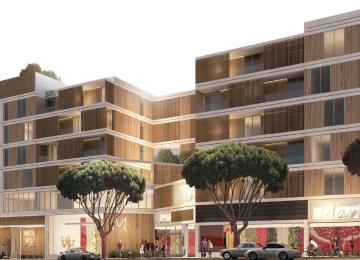Two local physicians are changing up their plans for a new housing development in Westwood that is to be marketed to UCLA students.
The Agora, a proposed Gensler-designed tower at 900 Hilgard Avenue, would replace a small office building 64 apartments in a mix of one-, two-, three-, four-, and five-bedroom plans, as well as parking for 190 vehicles in two podium levels and one basement level. The developers, Doctors Ted Khalili and Eraj Basseri, have announced their intentions to double the number of student beds at the property without altering the dimensions of the project - which is to stand 16 stories.
The increase would be achieved by allowing more than one student bed per bedroom, according to statements released by Khalili and Basseri. The change will allow for up to 462 students to live within the proposed building.
Beds at the Agora would be offered at rents between $1,000 and $1,200 month, with reduced rates for lower-income students. According to the developers, these price points would be more affordable than other private student housing options, and some of UCLA's own student housing.
UCLA has itself started the construction of multiple buildings that will eventually provide over 5,400 student beds both on campus and on university-owned sites just off campus, including a potential 17-story tower.
Both the university-owned and private developments have resulted in pushback from surrounding homeowners in Westwood. A website called "Save Hilgard Avenue" has emerged in opposition to the project, and claims to reflect the views of "a growing group of students, homeowners, and important Westwood stakeholders." The website makes numerous arguments against the project, including that it would result in "adverse impacts such as loss of property value and privacy," and that the estimated construction costs of the proposed tower would necessitate significantly higher rents than those advertised by the developers.
The website also notes that the adjacent W Hotel was originally built as student housing, but was converted to its current use after it was unable to attract residents.
- 16-Story Student Housing Community Proposed Near UCLA (Urbanize LA)

































